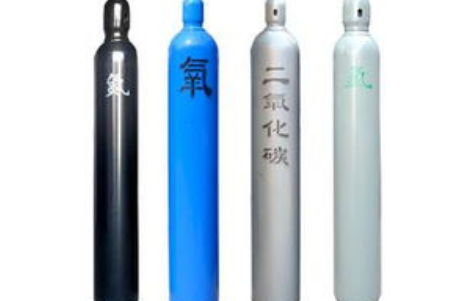|
|
The function of the pressure reducing gauge and pressure gauge on the nitrogen cylinder:Time:2023-09-10 The function of the pressure reducing gauge and pressure gauge on the nitrogen cylinder:
The pressure gauge on the is actually a reflection of the pressure inside the liquefied gas cylinder, used to measure and indicate the magnitude of the pressure inside the pressure product. If there is no pressure gauge or if the pressure gauge fails, the pressure of the pressure product cannot be expressed, thus directly endangering safety.
A sensitive and accurate pressure gauge is installed on the pressure product, allowing operators to operate the pressure product correctly with the gauge, ensuring safe and economical operation. The pressure gauge of a liquefied gas cylinder displays the pressure inside the cylinder, measured in hundred pascals.
The pressure gauge of liquefied gas tanks generally does not have specific indications, divided into four compartments and three colors. Two or three green to four yellow compartments indicate sufficient liquefied gas, and less than one indicates insufficient liquefied gas. The main indicator is the color of the pointer. Green indicates sufficient gas volume, yellow indicates insufficient air pressure, and red indicates that the gas is quickly used up.
The pressure gauge on the pressure reducing valve of the liquefied gas tank cannot fully reflect the amount of inflation, because liquefied gas exists in a liquid state in the bottle and continuously gasifies, and cannot be measured by using oxygen or nitrogen bottles to measure pressure.
The quality of the pressure gauge is not up to standard, and the hidden danger is that the pressure gauge displays the pressure at which the gas in the cylinder enters the pressure reducing valve. Generally, it can roughly display the remaining gas in the cylinder; It can also be used to detect any leakage in the connection between the gas cylinder and the gas appliance.
A pressure reducing valve with a gauge is usually a product produced by manufacturers to meet the needs of consumers. However, a pressure reducing valve with a gauge provides an additional opportunity for air leakage. If the quality of the gauge is not up to standard, especially the quality of the pneumatic spring, the use of this pressure reducing valve is not only unsafe, but also like an indefinite bomb, constantly threatening our lives.
And the pressure gauge is set before pressure adjustment, which has a higher pressure and greater safety hazards. If the quality of the pressure reducing valve is not up to standard, the safety hazard of the pressure gauge is even greater. In the past two years, there have been two gas accidents where a low-quality pressure reducing valve was used to open the pressure gauge and caused a fire.
Fortunately, it was discovered in a timely manner and handled appropriately, without causing any more serious consequences. So when choosing a pressure reducing valve, you should choose a pressure reducing valve from a reputable manufacturer and avoid using inferior pressure reducing valves to avoid gas leakage accidents.
If not, it is necessary to choose a pressure reducing valve without a gauge as much as possible. After filling liquefied gas with saturated vapor pressure, if various surrounding conditions remain unchanged, this pressure is stable. The pressure at which it stabilizes is called "saturated vapor pressure".
Saturated vapor pressure: The pressure at which the liquid and gas of a substance are in equilibrium under closed conditions at a certain temperature is called the saturated vapor pressure.
The water placed in the cup will continuously evaporate, but if the water is placed in a closed cup and the air inside is drawn, the water evaporation will cause the pressure in the cup to continuously increase. At a certain temperature, this pressure will eventually stabilize at a fixed value, and the liquid water will continue to evaporate.
Water vapor also continuously condenses into liquid water, and their velocities are equal. At this point, the liquid water no longer decreases and the water vapor no longer increases, reaching a stable state. Saturated vapor pressure, like density, melting point, and boiling point, is a physical property of a substance that changes with temperature.
|




